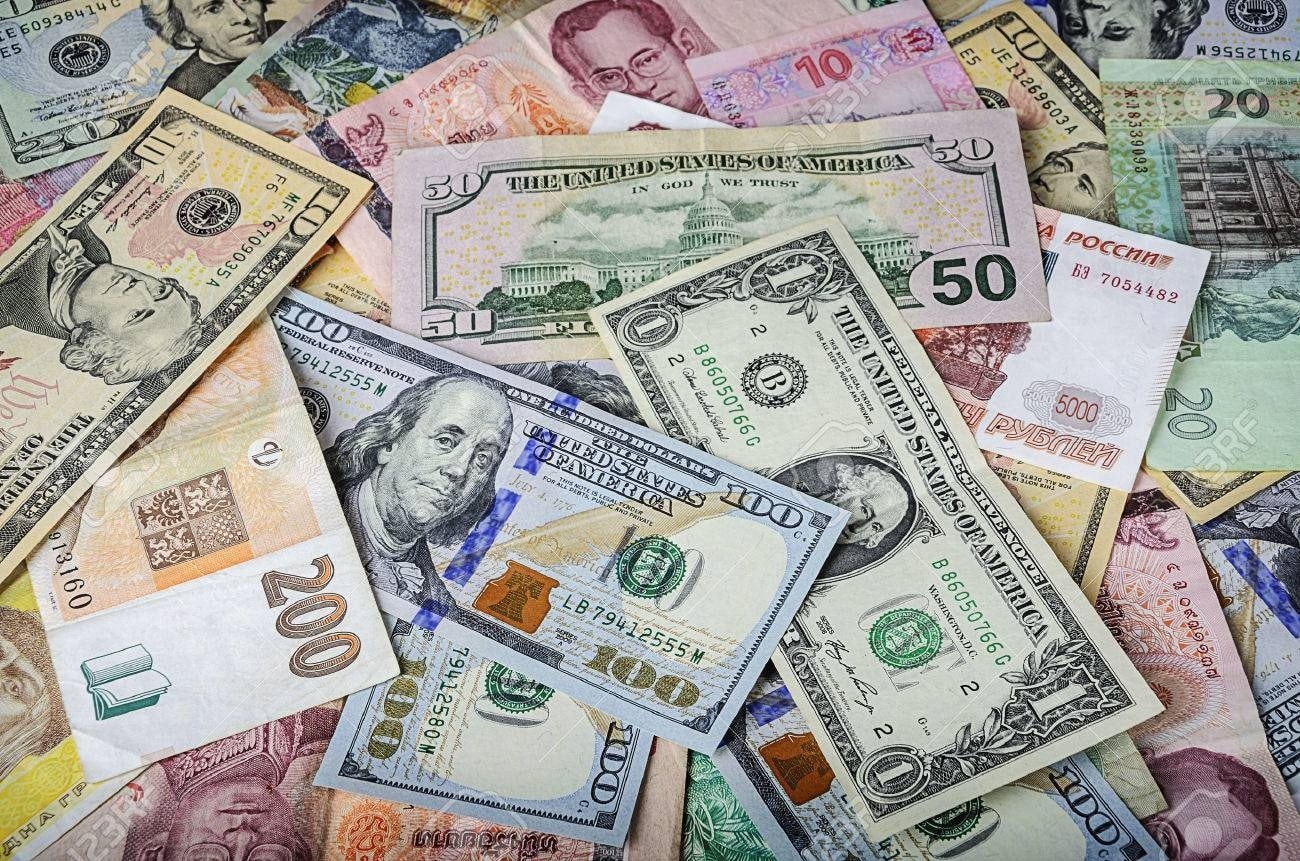World currency exchange rates
The US dollar gained in the last trading session, due to optimism that trade deals will brighten the US economic outlook.
Market confidence in the US economy has improved, falling after President Donald Trump postponed plans to impose 50% tariffs on European Union (EU) imports last weekend and after a trade deal with China earlier this month to reduce reciprocal tariffs.
“The concerns about tariff threats against Europe last weekend, which had boosted investor appetite for risk assets, have now been alleviated and reduced the negative sentiment about the US growth trajectory. That is boosting the dollar,” said Karl Schamotta, market strategist at Corpay.

The US dollar did not react much to the minutes of the US Federal Reserve's May 6-7 meeting released on May 28.
Fed officials acknowledged that they may face “difficult trade-offs” in the coming months amid heating inflation and rising unemployment.
The Fed kept interest rates unchanged at its meeting. Fed funds futures traders believe the US central bank is more likely to cut interest rates in September.
Upbeat consumer confidence data released earlier this week reinforced the view that the US economy remains solid and until there are clear signs of weakness, the Fed is expected to prioritize inflation concerns in its monetary policy decision-making.
In contrast, the EUR fell 0.35% against the greenback to $1.1288. Against the Japanese yen, the USD rose 0.33% to 144.8.
Demand at Japan’s 40-year government bond auction on May 28 fell to its lowest level since July, amid a market sell-off in ultra-long-dated bonds this month.
The yen fell about 1% against the greenback in the previous session, following reports that Japan will consider cutting issuance of ultra-long-term bonds following a recent surge in yields.
Traders are also watching the progress of a budget and spending bill in the US Congress, which is expected to add trillions of dollars to the debt.
President Donald Trump said on May 28 that he plans to negotiate aspects of the tax bill.
The Australian dollar fell 0.33% against the greenback to $0.6422.
Earlier data showed Australia's consumer inflation remained steady in April, fuelling market expectations for more rate cuts from the Reserve Bank of Australia.
Domestic foreign exchange rates
In the domestic market, at the beginning of the trading session on May 29, the State Bank announced the central exchange rate of the Vietnamese Dong against the USD increased by 12 VND, currently at 24,947 VND.
* The reference exchange rate at the State Bank's transaction office increased slightly, currently at: 23,750 VND - 26,144 VND.
USD exchange rates at some commercial banks are as follows:

* The EUR exchange rate at the State Bank's buying and selling exchange center decreased slightly, currently at: 26,841 VND - 29,866 VND.
EUR exchange rates at some commercial banks are as follows:

* The Japanese Yen exchange rate at the State Bank's exchange office for buying and selling has slightly decreased, currently at: 164 VND - 181 VND.
The YEN exchange rate at some commercial banks is as follows:

Source: https://baodaknong.vn/ty-gia-ngoai-te-hom-nay-29-5-dong-usd-tiep-da-tang-nhe-253940.html



![[Photo] General Secretary To Lam receives Chief of the Central Office of the Lao People's Revolutionary Party](https://vphoto.vietnam.vn/thumb/1200x675/vietnam/resource/IMAGE/2025/5/30/140435f4b39d4599a3d17975dfb444c5)
![[Photo] National Conference "100 years of Vietnamese Revolutionary Press accompanying the glorious cause of the Party and the nation"](https://vphoto.vietnam.vn/thumb/1200x675/vietnam/resource/IMAGE/2025/5/30/1cf6cd5c8a934ebfa347028dcb08358c)
![[Photo] A delegation of 100 journalists from the Vietnam Journalists Association visits the soldiers and people of Truong Sa island district.](https://vphoto.vietnam.vn/thumb/1200x675/vietnam/resource/IMAGE/2025/5/30/0984a986227d4e988177f560d2e1563e)

![[Photo] Journalists moved to tears at the Memorial Service for the soldiers who died in Gac Ma](https://vphoto.vietnam.vn/thumb/1200x675/vietnam/resource/IMAGE/2025/5/30/9454613a55c54c16bf8c0efa51883456)





















































































Comment (0)